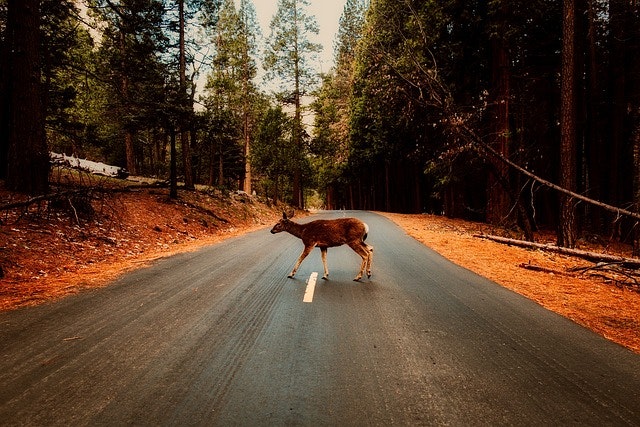
Stay Safe on the Road: Deer Collision Prevention Tips
Fall is a breathtaking time of year, with vibrant leaves painting the landscape in warm hues. But beneath the beauty lies an often-overlooked danger: the rise in deer-related accidents. Shockingly, these accidents cost over $1 billion annually, with the average repair bill hitting $3,000. However, you can take proactive steps to protect yourself, especially during the high-risk months of October to December.
Be mindful of peak activity hours
During this season, deer are most active in the afternoon but can be harder to see at dawn and dusk. Be extra cautious when driving at these times, especially on rural roads or in wooded areas.
Use your high beams wisely
When driving at night, use high beams when there’s no oncoming traffic. This can help you spot a deer’s reflective eyes from farther away.
Look for more than one
If you see a deer cross the road, slow down and stay alert. Deer often travel in groups, so others may follow close behind.
Know when not to swerve
If a deer suddenly appears in your path, brake firmly but try to stay in your lane. Swerving can lead to more serious accidents involving other vehicles, trees, or guardrails.
Heed the signs
Deer crossing signs aren’t just for show — they’re placed in high-traffic areas where deer frequently move across the road. Reducing speed in these zones can give you more time to react.
Use your seat belt
Wearing your seat belt significantly reduces the chance of serious injury in the event of a collision.
If a collision occurs, take the proper steps
Move your vehicle to a safe location and turn on your hazard lights. Call the police, avoid approaching the animal, and contact your insurance provider to report the incident.
While deer collisions are a serious seasonal hazard, they can be significantly reduced through caution and preparedness. Stay alert and treat every rural road or wooded stretch as a potential risk zone. If you have questions about your auto insurance coverage—especially regarding deer-related accidents—please contact our office. We're here to help ensure you drive safely and are adequately protected.
